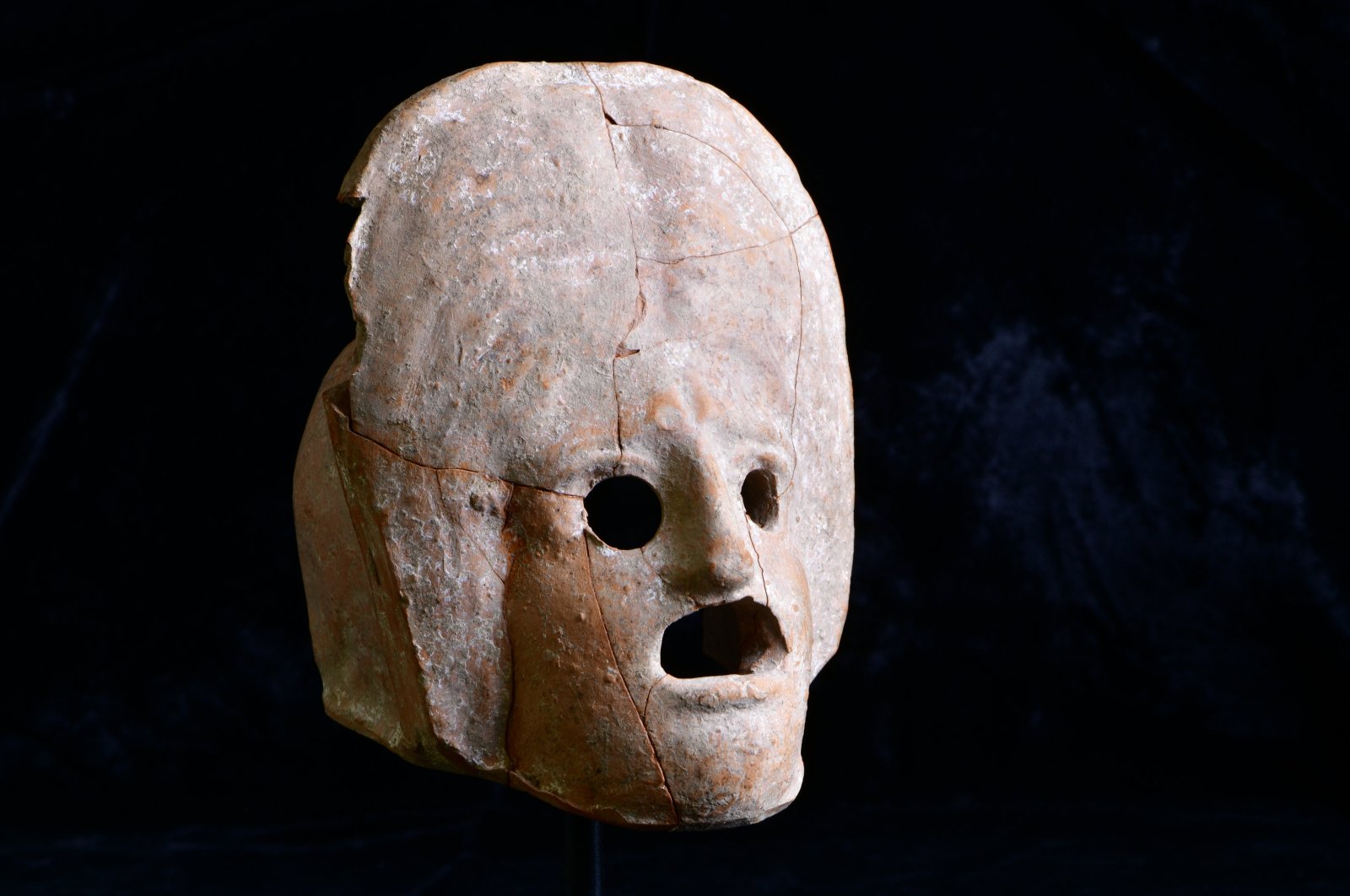
Archaeologists in the Çavdarhisar district of central Türkiye's Kütahya have uncovered an ancient theater mask made of fired clay and a monumental gate structure leading to the ancient city of Aizanoi.
The discovery is part of ongoing excavation work at Aizanoi, a site on UNESCO’s World Heritage Tentative List since 2012 and home to one of the best-preserved Zeus Temples in Anatolia.
The excavations are supported by the Ministry of Culture and Tourism, the Kütahya Governorate and Kütahya Dumlupınar University, with sponsorship from Gürok Tourism and Mining Inc. and Halk Investment Inc. The team includes scholars from various universities, along with 10 technical staff and 20 workers.
Professor Gökhan Coşkun, head of the excavation and chair of the archaeology department at Dumlupınar University, said the team has focused on the agora and stadium structures since May. Work continues on the stadium’s eastern stands, with efforts to uncover collapsed seating blocks caused by an earthquake.

To prevent rainwater from damaging the foundation of the Zeus temple, restoration work on the building’s basement is also underway. Excavations in the agora have revealed three more shops, a well-preserved marble-paved courtyard, column remnants and marble steps leading to the portico.
The team also discovered a two-story structure south of the agora, believed to have served as the city’s monumental gate.
Coşkun said the architecture of the structure, with its "aedicula" style, suggests it was part of a public building, likely an entrance to the bustling marketplace.
Additionally, the excavation uncovered a well-preserved theater mask made of fired clay, shedding new light on the Dionysian cult of Aizanoi.
Similar masks had been found as burial offerings in nearby tombs in previous years, suggesting these artifacts will become more common as the excavations progress.
